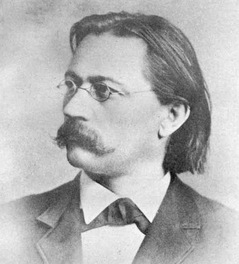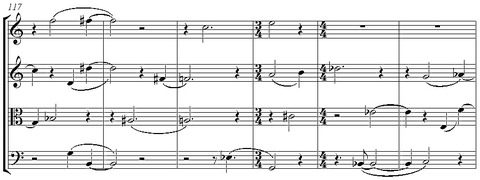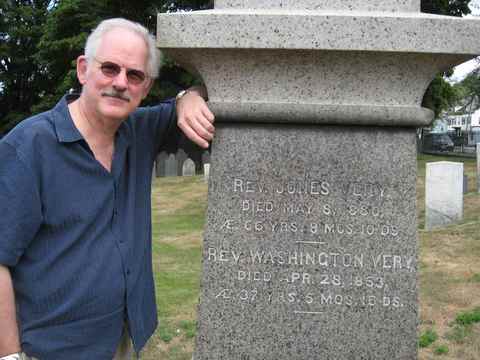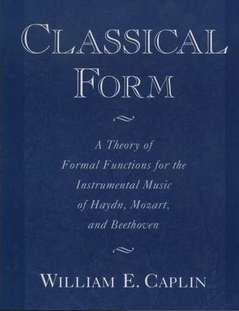[TWO UPDATES BELOW] I begin the morning blindsided by the terrible news that one of the wildest and most imaginative composers of my generation, Art Jarvinen, has passed away at age 54. He was a bassist, percussionist, and co-founder of the California E.A.R. Unit, and one of the most thoroughly integrated rock-classical musicians around. His pieces Murphy Nights and The Paces of Yu were staples of my totalist lectures. He put out a scabrously funny Beatles satire CD called Sgt. Pecker. He sent me transcriptions of music he’d played with Captain Beefheart. I know no details about his demise. Ironically, Art and I had only met in person for one lovely evening together at his home in LA, though for years we corresponded weekly and he used to comment on this blog. He had bought property in Vermont, was supposed to stop by and see me on his way there but we failed to communicate somehow, and I heard a rumor only a few days ago that he had precipitously moved back to California. David Ocker at the blog Mixed Meters has a little more information. Art’s web site is here. I’m just stunned.
In Arthur Jarvinen’s music, spray cans hiss, mousetraps snap, window shutters flicker, pencil sharpeners grind away, and harpsichords cavort among drums with elephantine grace. You may conclude that I am describing gimmicky or at least humorous music, but you would be wrong: this music is contrapuntal, thoughtful, purposeful, and rhythmically intricate. It’s just that Jarvinen works with musical ideas so essentially rhythmic that spray cans and window shutters are sufficient to bring their essence across. I’ve always had this idea that a really great musician, stranded on a desert island, could make a good piece just hitting two sticks together, and Jarvinen lends credence to the idea. The more humble media you can communicate with, the closer you are to the bone marrow of music.
Again, though, put aside any notion of an American primitif. Jarvinen’s The Queen of Spain – source of the harpsichords and drums mentioned above – is an almost satirical transformation of three keyboard sonatas by Domenico Scarlatti, scored for harpsichords (or electric keyboards) and percussion. He diffracted Scarlatti’s transparent harmonies by adding mathematically-derived extra tones, keeping the rhythmic character of the original but blurring the lines into massively bouncing sonorities. And in Murphy-Nights, the electric keyboard and bass provide a groundwork for four wind players by playing two ostinatos over and over, one in 33/16 meter and the other in 8/4, so that with each repetition one gets a 16th-note ahead of the other.Â
I have no idea how this latter feat is accomplished in performance, by the way. No common bar lines connect the two parts: they just have to start with the same 16th-note pulse and keep precisely in tempo, sans conductor. Somehow on the California Ear Unit’s recording (O.O. Discs 28) they get it perfect and secure.
This latter trick, abstruse as it may sound, actually points to what connects Jarvinen to his generation. If you’re minimalism-conversant, it may have already occurred to you that that 33-against-32 cycling is a direct descendent of Steve Reich’s Piano Phase and Come Out, which introduced different-lengthed rhythms going out of phase as a peculiarly American structural device. Like many American composers born in the 1950s, Jarvinen absorbed Reich’s lessons well. Also like many of those composers, he sees no reason to limit his music to the simple contexts and pretty tonalities that formed the basic features of minimalist style.
The body of music by younger composers that evolved from minimalism to a complex rhythmic style heavily influenced by world musics has come to be called Totalism. It is primarily a New York City phenomenon, but Jarvinen, rooted in Los Angeles, is the most visible West-Coast example so far. The word totalism (far from universally accepted yet) has implications of having your cake and eating it too, being accessible and clear on one hand, yet also intricate and complexly structured enough to sustain the interest of cognoscenti. As Mozart wrote to his father about the quartets he was writing in 1782, the totalists can say of their music, “There are many passages here and there from which connoisseurs alone can derive satsifaction; but these passages are written in such a way that the less learned cannot fail to be pleased, though without knowing why.”Â
Without courting collage, totalists pack a lot of disparate streams into their music, especially jazz and world musics: listen to the jazz trombone solo that opens Jarvinen’s Erase the Fake; the improvised violin solo in the middle of Murphy-Nights; the charmingly authentic, Piazzola-esque melody of his Cheap Suit Tango. Some features, however, are quintessentially totalist. I direct your attention to the wild unison line played by sextet at the beginning of The Vulture’s Garden. or the jazzy unison melody played by quartet in Murphy-Nights. This kind of ensemble doubling evolved out of the Philip Glass-Steve Reich ensemble concept (though Messiaen’s Quartet for the End of Time is a first cousin), and is turned here toward athletically non-minimalist ends.
This is difficult music to play, even though clear-lined, melodic, and devoid of the 11-against-9 grupetti and rhythmic fragmentation of an Elliott Carter or a Pierre Boulez. And why, since it scorns such complexities, is it so difficult? Because, like every new style, it demands of performers a certain sensibility that must be internalized. The unison lines and rhythms of totalist chamber music entail an ensemble unity of gesture quite different from the heavily-counted Babbitt serialist work or the flexible, diversely-functioned give-and-take of a Schumann piano quintet. The smooth uniformity of line, casual yet without swell or nuance, demands ears nurtured on the minimalism of Terry Riley and Phillip Glass, and hands and lips that can swing like John Coltrane.Â
If I may ascend my soap box and preach just the briefest sermon, very few chamber ensembles have learned to negotiate music derived from minimalist influences because they don’t perceive the difficulties involved. They glance at the score, see a line of unison 8th-notes, say to themselves, “Oh, this is nothing, I played the Carter Fourth String Quartet,” and then they proceed to underrehearse and perform miserably. I’ve heard it all too often. I’ve heard members of the New York Philharmonic do a laughable job on a piece as simple as Terry Riley’s In C. A handful of groups, like the California EAR Unit, Relache, Kronos Quartet, and Essential Music have superbly cultivated the technique needed for post-minimalist music. What are the rest waiting for, a message from God? As Schoenberg said – and it applies again in each new generation – “My music isn’t modern, it’s only badly played.”
You won’t find any such problems, however, on Jarvinen’s CDs, mostly performed by the California EAR Unit, of which Jarvinen is a percussion-hitting and guitar-wielding member. For the most extreme instance of his bizarre timbral imagination, listen to The Paces of Yu, scored for mousetraps, window shutters, fishing reel, and – the one pitched instrument – Brazilian berimbau, a kind of one-stringed violin. Such music has the awkwardness of sincerity. It is meditative, not in the hypnotic sense, but in the thoughtful, slowly-turning, Emersonian sense of examining a musical idea from every angle. Jarvinen is sufficiently immersed in history to be a true representative of his generation – and honest and original enough to set himself apart from it as well.




